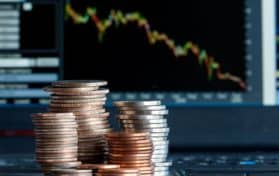
On Friday, the Labor Department released its monthly consumer price index report, and the inflation rate is at yet another historic high. The May CPI came in at 8.6 percent. This is after inflation hit an all-time high of 8.5 percent for March, then dipped to 8.3 percent for April.
President Biden has expressed a desire to work on inflation. He met with Fed Chair Jerome Powell in a one-on-one meeting at the White House last week, and he released an op-ed in the Wall Street Journal. Biden even sent his Treasury Secretary Janet Yellen on a bit of a television tour to prop up his new economic plan.
The latest Labor Department CPI report shows that inflation jumped by one percent between April 2022 and May 2022. Economists at Refinitiv had predicted that inflation would remain steady from April at 8.3 percent, and they also forecast a 0.7 percent monthly gain.
Once again, this is a historic pace in surging inflation since 1981.
Core prices – which encompasses the price of goods but does not include fuel and food – surged six percent since the same time period last year. (This also surpassed expectations by Refinitiv economists.) Since core prices rose 0.6 percent on a month-to-month basis, experts believe that underlying pressures of inflation are still strong.
Seema Shah, a strategist at Principal Global Investors, remarked: “What an ugly CPI print. Not only was it higher than expected on almost all fronts, pressures were clearly evident in the stickier parts of the market.” Shah related that when inflation does begin to abate, “it will be painfully slow.”
So where did prices rise during the month of May? To be frank, prices rose across the board. The price of energy, which includes both utilities and fuel, rose by 3.9 percent in May. (All total, the price of energy is up by 34.6 percent since the same time period in 2021.) In particular, gasoline prices are up by 48.7 percent for the year and up by nearly seventeen percent in one month.
The consumer price index also measured the cost of housing; in fact, one third of the CPI is related to shelter. Between April and May, the cost of shelter rose by 0.6 percent – the fastest surge in one month since 2004. Since the same time period in 2021, housing has risen by 5.5 percent. This is the fastest climb in housing costs since February 1991.
Over the last year, food prices have surged by ten percent. Between April and May, food costs rose by 1.2 percent. Dairy and dairy products went up in price by 2.9 percent, which is the largest percentage since July 2007. The CPI, however, doesn’t account for a phenomenon many are reporting after a trip to the grocery store – shrinkflation. In an effort not to increase prices, the amount of product consumers are getting is now decreased. It’s happening in potato chips, coffee, and even candy. Political pundits believe that sizes won’t go back to the original offerings to which we’ve grown accustomed.
Americans face severe financial pressures to make ends meet. Experts say the average American is spending nearly an extra $5,000 in fuel alone per year. Add to this the ever-increasing price of groceries and housing.
Joe Biden said that today’s CPI report “proved what Americans already know; Putin’s price hike is working well.” Biden also blamed oil companies as well as other corporations for the increase in inflation. Once again, he urged Congress to “take action” regarding price gouging.
Food prices – at-home food prices – went up by nearly twelve percent when compared to the same time as last year. With farmers seeing an increase in the price of simply running their equipment, food prices are likely not as high as they will be once yearly harvesting is done.
Nearly three-quarters of Americans surveyed say they are cutting back on eating out in an effort to decrease their personal spending.





